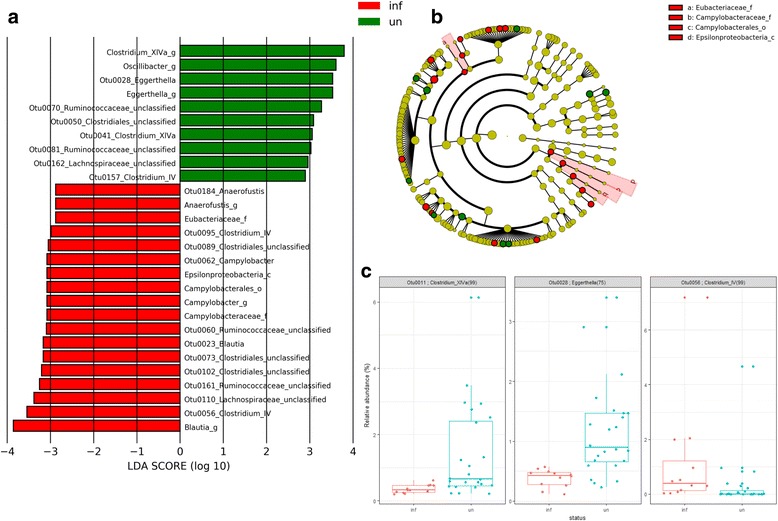Fig. 7.

Differential abundance of members of the cecal microbial communities of TLG C. jejuni-colonized and non-colonized broiler chickens. a Histogram of the LDA scores computed for features differentially abundant between C. jejuni-colonized broiler chickens from 20 da (denoted as “inf” by red bars) and non-colonized birds (denoted as “un” by green bars). LEfSe identifies which clades amongst those detected as statistically differential will explain the greatest differences between the communities [42]. b A taxonomic representation of the clades responsible for the greatest differences based on the Ribosomal Database Project [39], where red circles represent those of greater abundance in the C. jejuni-colonized birds, green circles for those of non-colonized birds, and yellow for non-significant differences. The diameters of the circles are proportional to the taxon’s abundance. The representation highlights the presence of the differentially abundant taxanomic levels containing Campylobacter (_f family, _o order and _c class) as concentric arcs labeled a to c. c Plots of the relative abundance differences between C. jejuni-colonized (denoted as inf in red) and non-colonized chickens (denoted as un in blue) for TEG when calculated using ANOSIM from Bray-Curtis indices and identified by SIMPER. Each data point represents the relative OTU abundance in a single bird. The horizontal line indicates the median, and the top and bottom of the boxes indicate the 25th and 75th percentiles. Whiskers indicate maximum and minimum values with the exception of those exceeding 1.5-fold the interquartile range
